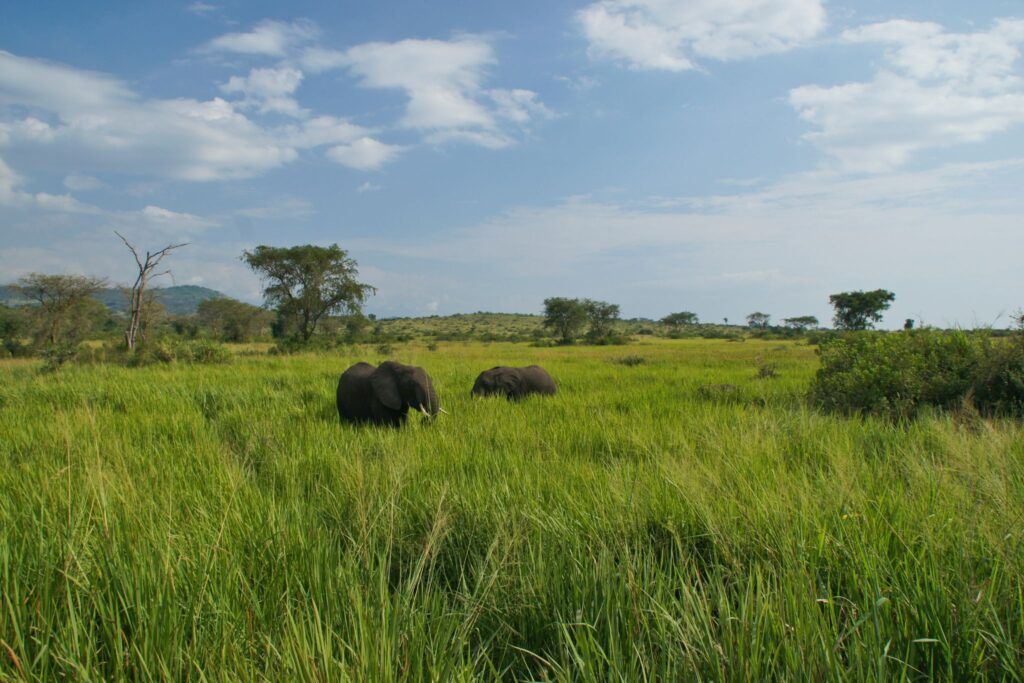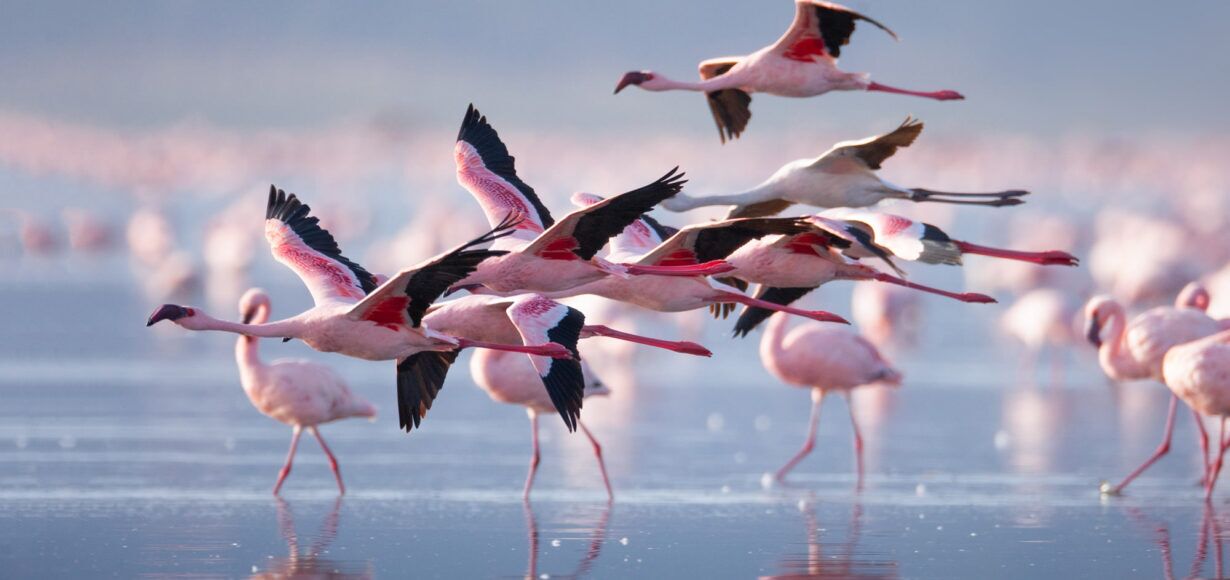Weather in Uganda
Sun, pleasantly warm temperatures and a tropical climate. Due to its location near the equator, this is what you can expect in Uganda. There are also two wet and two dry seasons and, since the weather can be part of your decision of when to visit Uganda, we have made a list of the advantages of every season. But more on that later.
The average daytime temperature ranges between 24°C and 33°C. In the far north temperature can reach peaks of 40°C and in lower altitudes it can get as cool as 16°C at night or even 7°C in higher altitudes.
Even though there’s little temperature fluctuation throughout the year, we can notice a slightly warmer season, with the hottest months being January and February. Between June and August you can expect cooler temperatures, and depending on the altitude, you could even feel cold!
This is especially true if you plan a gorilla trekking or chimpanzee trekking tour as they live quite high up in the mountains. It can then get down to 7 or 8°C at night – so make sure you pack some warm and comfy clothes!

The weather in Uganda: dry seasons
The dry seasons run from June to August and from December to February. The most popular months for a safari or trekking are the dry months of June, July and August, which for a big part coincides with summer holidays in the northern hemisphere.
During the dry seasons wildlife gathers around rivers and waterholes and landscapes vary – thanks to shorter bushes and shrubs, spotting animals couldn’t be easier. If you fancy to go trekking or for nature walks, you’ll encounter drier trails and maybe a short rain shower here and there.
The dry months are the peak season for tourism, which is why parks tend to be more crowded and prices higher. And since tours like gorilla or chimpanzee trekking are in high demand, it can also be more difficult to get a permit for this unique activity. If that’s on your to-do list, you best book your trip early enough.
The pros at a glance
- Wildlife is easier to spot
- Temperatures are pleasant and days are mostly sunny
- There are fewer mosquitoes (yay!)
- The roads are better making game drives easier
- It’s the best time for gorilla and chimpanzee trekking
- Cool temperatures from evening to early morning
- Clear blue skies

The weather in Uganda: rainy seasons
The rainy seasons, or wet seasons, run from September to December and from March to May, with the heaviest rainfall usually happening in April and October. Since the northern region are out of the tropical belt, it experiences only one rainy season, from March to October. In the northeast though, the climate is semiarid and the region can even witness some droughts.
During the rainy seasons you’ll find blooming lush landscapes which is why TV companies choose to shoot their wildlife documentaries in these months. Generally it’s less crowded and the costs of game drives and accommodations are lower. So if you don’t mind a bit of mud and rain, these are the perfect seasons for you to discover Uganda.
Since trails and tracks might be slippery and the forest denser, this time is not ideal for gorilla or chimpanzee trekking – even though the primates might be easy to spot as they find plenty of food from fruit trees and don’t have to wander deep into the forest.
The pros at a glance
- Flowers bloom and the grass and forests are green
- Bird watching is at its best
- The game is in good condition, as there is plenty of food and water
- Animal babies are born
- Lower rates make for a cheaper safari
- Parks are less crowded, which allows for a more intimate safari experience
Are there mosquitoes in Uganda?
Uganda’s warm, tropical climate unfortunately provides an ideal breeding ground for mosquitoes. To protect yourself from their nasty bites, you best bring long-sleeved shirts and long trousers. And even though most accommodations are equipped with mosquito nets, it’s always a good idea to bring your own mosquito repellent. With these precautions you can look forward to an enjoyable holiday free from annoying mosquito bites.
Not all of your questions have been answered? Then ask us here and we’re happy to answer them for you!
Let us create your tailor-made trip
Receive a free, no obligation quote
Start planning your dream trip


